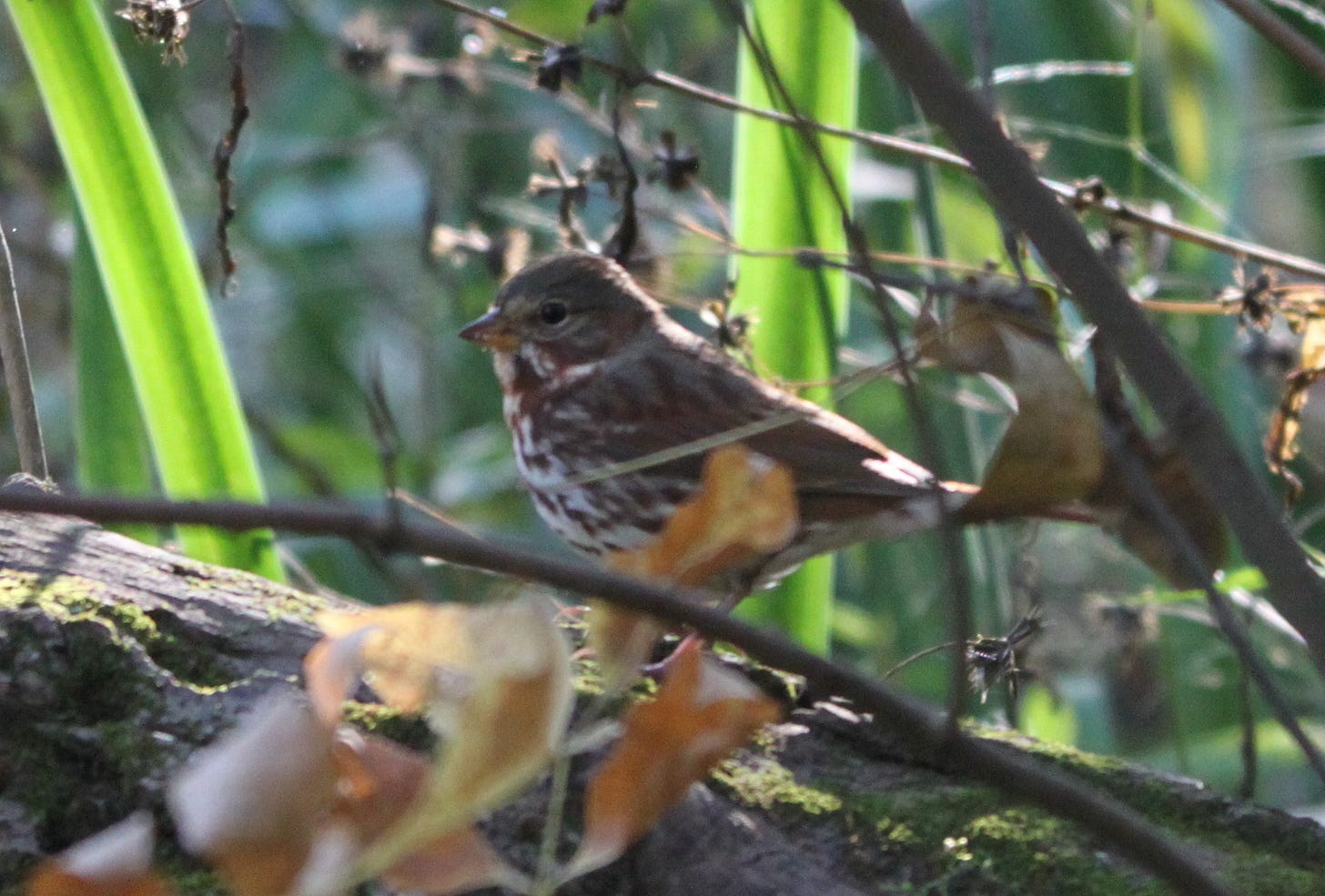An appreciation for sparrows
It's time to enjoy these nondescript little brown birds.
As most insectivorous species have moved south, there is one grouping of perching birds that mostly will stick around this winter: the sparrows.
Sheryl DeVore had a nice rundown recently of this sometimes puzzling and oft-maligned group of birds (think of the House Sparrows that have overrun your feeder). Ironically, the non-native House Sparrows aren’t related to the rest of the New World sparrows we anticipate throughout the year but are something more like the Old World weaver finches.
Sparrows can be a challenging group to identify to species. There’s a reason the term Little Brown Job, or LBJ, has been thrown around birding circles for decades. It’s easier to deem a little brown form disappearing into a shrub an LBJ than to wait patiently for a closer, mostly obscured glimpse.
Sparrows may be considered drab, but there is quite a bit of variation among the several types present in the Midwest. Their intricate patterning and subtle coloration can be downright striking when contemplated for any length of time.

As the season wears on, there are fewer sparrow species in our midst. Though it’s worth checking most any brushy area in a field, marsh, or woodland. A few of the likelier species about are American Tree Sparrow, Song Sparrow, Swamp Sparrow, White-throated Sparrow. Juncos are sparrows, too, and perhaps no bird epitomizes winter at our latitude more. It’s worth noting that Dark-eyed Juncos summer fairly close to many of us, even in northeast Ohio. You can get a brief look at a portion of my friend Haans’ research methods here:
There are some unfortunate patterns that suggest a decline in sparrows in our part of the world—more on that in a future post. But by looking for them all year-round, enjoying their presence, and counting them, we can ensure that some habitat remains for them for generations to come.
Upcoming screenings
Thanks very much to everyone who has attended a recent screening, from Peoria to Baraboo to River Forest! Here are the latest. To learn more about my latest film, FLUDDLES, please click here.
November 28 - FLUDDLES, McHenry County College, Luecht Auditorium, McHenry, Ill., 6:30 p.m.
December 6 - THE MAGIC STUMP, Thatcher Pavilion, 8030 Chicago Avenue, River Forest, Ill., 6 p.m.
December 9 - FLUDDLES, Rock Springs Nature Center, 3939 Nearing Lane, Decatur, Ill., 2 p.m.
A call for Encouragers
Mark Catesby relied on the support of subscribers, or Encouragers, to pay for his work. Rather than waiting to complete an entire volume, he would regularly send illustrations to Encouragers for years and years. This way he could afford to continue his passion for depicting the birds of the Americas. With This Week in Birding celebrating its third anniversary, you can become an Encourager, too—of this newsletter. Just click the button below to begin the process of becoming a Paid Subscriber. Subscriptions start at $50 per year and are also offered at $5 per month.
Parting shot
If you liked today’s post, you also might like these previous posts:
Birding considered among the most boring hobbies
A philosophical question to ponder: what is boredom? Watching paint dry? Waiting for water to boil? Watching grass grow? Or worse, is it birding? A new study, recently featured in The Guardian, involving 500 people, found birdwatchers among the most dull people. Less boring pursuits include acting and journalism. Researchers Wijnand van Tilburg, Eric Ig…
Five hotspots to visit in and around Chicago this winter
With the start of a new year, new goals and new bird lists, now’s the time to plan some mid-winter birding adventures. Here’s a handful of favorites to get 2022 off on the right foot. Jackson Harbor This is just the right mix of winter waterfowl and gulls with a handful of land birds, too. Start by parking in the lot on the southwest corner of Hayes Driv…






Boring from the inside or the out? Makes all the difference to the birder.